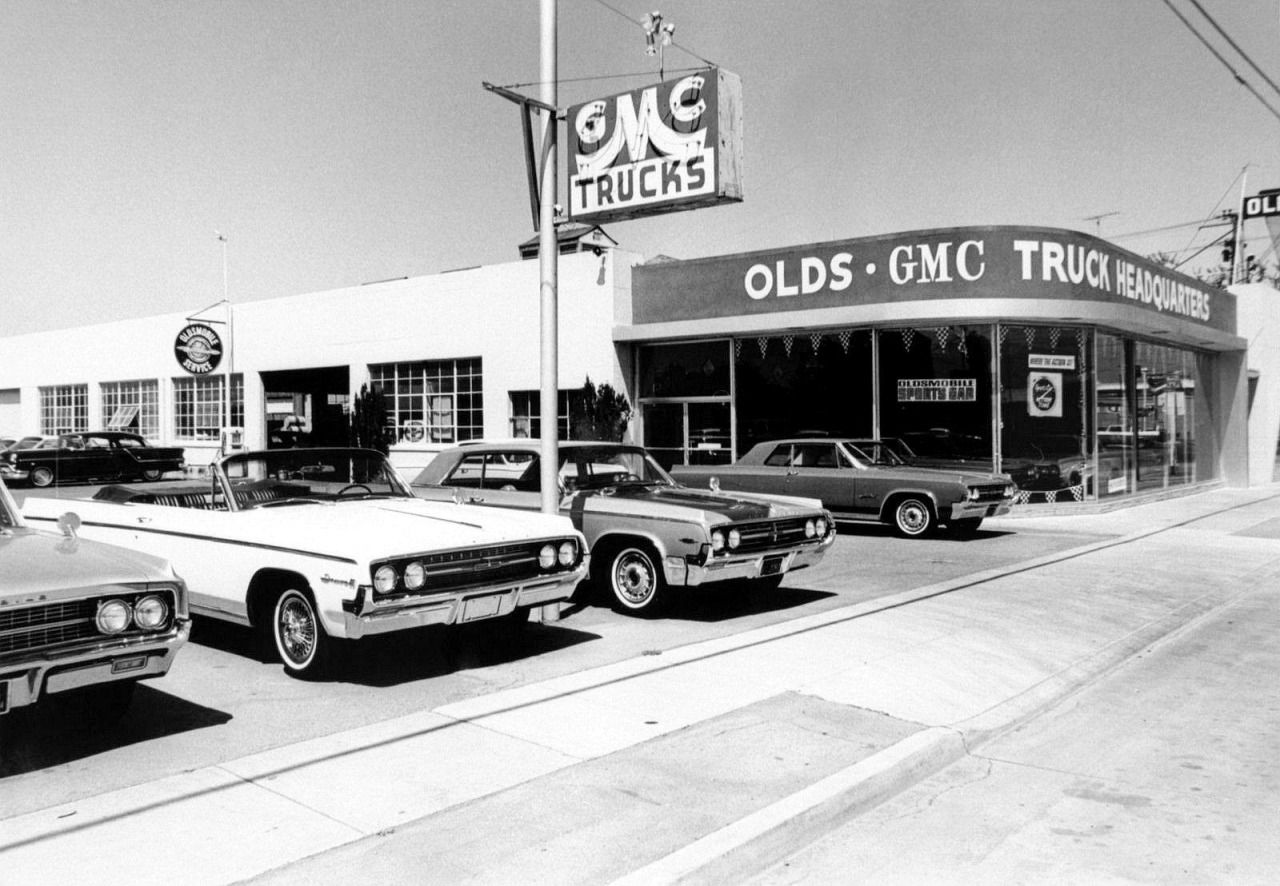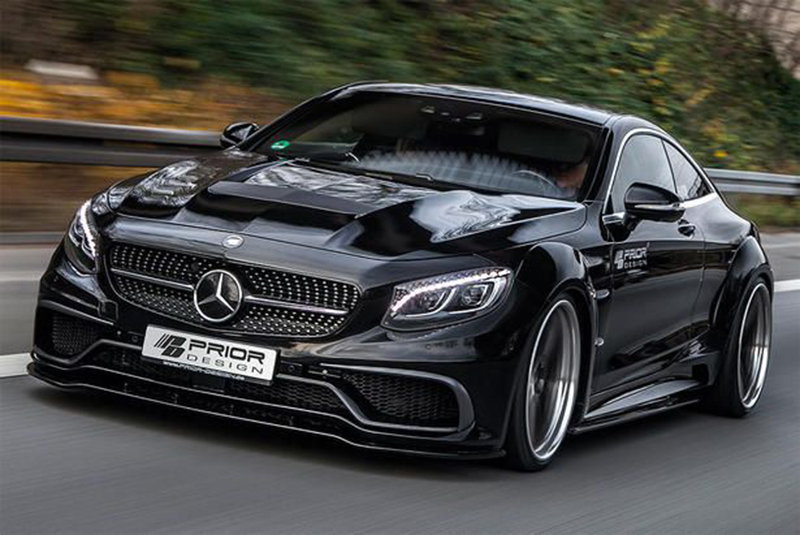Things to Know Before You Buy a Classic Car – A Beginner’s Guide
Classic car auctions can easily bring dollar signs to our own eyes as we see what they can potentially be worth given the right circumstances. When you see rare Corvettes and Mustangs selling at auction for millions of dollars, it’s hard not to think that investing in a classic car is an easy route to millionaires-ville.
Buying Classic Cars is Not Easy
It’s true that classic cars can be a sound investment, as well as a beautiful thing to own for the sheer automotive heritage that it represents, but it’s not something to get into lightly. There is much to learn before you should proceed with any plan to purchase one or more classic vehicles. Today’s piece is all about the important considerations to make before you pull the trigger on a purchase. Hopefully it will help steer you in the right direction and avoid the many potential pitfalls.
Tips for Beginners
1. Classic Vs. Vintage Vs. Antique
It’s firstly important to understand the difference in these terms that often get thrown around when talking about older cars. Some people use them interchangeably, but they actually have rather different meanings. One way you can think of the difference is in terms of the year of manufacture:
- Classic – 21-44 years old
- Antique – 45-89 years old
- Vintage – Built between 1919 and 1930
There are always some exceptions to this rule of thumb, but this is a good place to start. For insurance purposes, you’ll need to gain some clarity on any car you’re serious about buying. At the very least, you’ll to know the exact model number and year of manufacture. You’ll also need to know the engine size. All of these things will affect the official “status” your car is given and by extension the premiums that you have to pay on it.
Finally, remember that age alone does not equate to “classic” in the sense that many understand, especially future buyers of your investment. The word “classic” evokes a sense of style and mystery; of old-world charm and, most importantly in the automotive world, of rarity. The best resource you can acquire in the realm of classic cares is that of rarity. The harder your car is for others to get hold of, the greater its overall value is or will become.
2. Establish Your Main Motivation
Knowing which car is the right choice for you will also depend on your intentions or inclinations. For example, are you looking for something to restore? Are you looking for a pure investment; something to purchase, lock away with basic maintenance and allow to gather value over time? Perhaps you’re looking for a car to use; something to take you and your spouse out for weekend drives, for example.
Whatever your motives are, you should be clear about them from the beginning. For instance, purchasing a fixer-upper if you’re wanting a strong investment might not be a good idea. Equally, you wouldn’t want to be driving your investment vehicle around too casually, wearing down its already rare and perhaps irreplaceable parts. Understanding why you want the car will help greatly in helping you make the right choice.
3. Classic Car – Auction, Dealer or Private Seller?
Our next tip is to take care when choosing a sales channel. Whether it’s at auction, via a classic car dealer, or through a private seller, each channel has their own benefits and drawbacks.
Auction: The good thing about an auction is that you don’t even have to be there in person to take part in the transaction. You can join the auction via the Internet or phone, but it is more enjoyable to be there. The really great thing is the combination of high-quality items and ever-present possibility for the deal of a lifetime. If it happens that there are few interested buyers, you could snap up a car for a price that a dealership or private seller would never consider.
On the other hand, auctions provide little opportunity for proper inspection and so you’re always taking something of a gamble. You might get a cursory look at the item before it goes under the hammer, and may see it in a catalogue, but you won’t have the opportunity to conduct a full and proper mechanical inspection.
Dealer: If you work with reputable dealers, they’ll handle the headache (and expense) of having cars in their inventory inspected. Many car showrooms offer this service now to stay competitive in the marketplace. To ensure that you buy from them and not from a rival, they are also nearly always willing to offer some leeway on price or package deal. Finally, reputable dealers will also be able to present you with a full complement of documentation to prove the vehicle is authentic, as well as its full history from production to present. They often require these things before accepting the item into their inventory.
On the flip side, with a dealer you always run the risk of running into a less-than-reputable one. This will mean the negation of many of the benefits above. Besides that, dealers are in this business for profit, so the likelihood of spending more is always higher than with an auction or private seller. They have had to purchase that car from someone or somewhere else first, so they have to now sell it on again at a profit. This pushes the price up for you.
Private Seller: Probably the biggest advantage of using a private seller is cutting out the middle man. They will also typically welcome inspection in order to build trust, but you may have to foot the bill for that inspection. You could get lucky and find a seller who has already done one to establish credibility from the get-go. In any event, it’s good to deal directly with a seller, because there are not going to be any hidden processing fees or additional taxes.
One big drawback to working with private sellers is their possible lack of proper credentials for the vehicle. They may have taken it from another owner who didn’t provide them with a full service history, or proper documentation to prove its authenticity, and so the chain goes on. It’s also very tempting to put too much trust in private sellers because you assume that they just want a fair deal. The problem with that is that private sellers also don’t have to worry about reputation. They could do a one-off bad deal and not have to worry about the consequences.
4. Get a Professional Inspection
Unless you are a trained mechanic yourself or you happen to have in-depth knowledge as to the technical details of the classic car in question, you should certainly seek a professional inspection on your target car. Ideally, you get this inspection done before you buy the car. When working with a dealership or private seller, you can do that. The only time it’s tricky to accomplish this before purchase is with an auction.
You may be able to pass judgement over the exterior condition, as well as the state of the interior dash, upholstery etc. You could also test drive it and see how it feels to drive on the road. Unfortunately, unless you have the proper knowledge and/or experience, you can’t see the more pernicious problems that might be lurking somewhere within an engine cylinder, or a corroded gas tank, or a faulty exhaust system. Inspections will be able to check for these more hidden — and usually far more expensive to fix — problems. Spotting a major fault could be the difference between an inflated profitable sale in the near future and a giant waste of potentially thousands of investment dollars.
5. Classic Car Maintenance
A further crucial consideration is maintenance on your classic car. If you’re buying it as a pure investment, then you’ll likely inflict minimal to no wear and tear on the car while you have it. In this case, maintenance isn’t too pressing an issue. If, on the other hand, you plan to use the care regularly, then you’ll have consider the availability of spare parts, as well as the availability of qualified repair professionals who are qualified and experienced enough to handle repairs on your new prize.
There will be cars for which new parts are a pipe dream at best, and others for which parts are available but either expensive or otherwise difficult to get. This requires some research on your part. In the end, you may have to bear the expense of custom-made spare parts if you want to ultimately retain the car’s greater value. If any component detracts from the car’s potential to function or be sold as anything other than tip-top condition, then you’re potentially cutting away many thousands, even tens of thousands from the car’s value.
Avail yourself of the many online resources in advance. For example, let’s say you’re getting a classic Chevy. It just so happens that Chevrolet has dedicated a big portion of its main website to classic parts in order to help those keen on restoration projects. Other broader websites like the Classic Car Database will provide you with a simple search function for parts on over 33,000 models. You can even search by VIN number.
Below are some further links for classic car spare part resources:
As we mentioned above, however, spare parts themselves are not always enough. You may also need a support network to help you out when things go wrong. If you’re not lucky enough to have a local mechanic with expertise on your classic model, then the best place to look is within classic car community groups. Browse Facebook and Google to find groups in your area, or at least with members in your area. They are usually a great source of support and guidance.
6. Study Insurance Options Before Purchasing
While it’s true that insurance on classic cars can be more than on brand-new ones, it doesn’t mean you have fewer options. There are still plenty of policy choices out there, and you should shop around before settling. You should also note that according to data from Hagerty in 2019, classic auto insurance rates are in fact 36 percent less than standard rates. It comes to around $276 less than a standard policy. This will fluctuate quite wildly, however, depending on the exact make, model, year and condition of your car, as well as your intended use.
A good piece of advice is to look for providers that specialize in classic cars and other old-vehicle insurance. They are likely to give more options and additional benefits over general providers. The latter will limit choice in classic cars since it’s too niche for them to make comprehensive plans and tailored deals profitable.
For specialist providers, Hagerty is a good choice with a well-established reputation in this field. Another good provider is American Modern, which also has many flexible and pleasing options in its coverage like mileage plans, flexible payment options, many deductible options and more.
You shouldn’t totally rule out larger general providers, however. Some of them may surprise you with a good deal. The bigger their customer base, the more likely they are to have a good set of classic car clients. This makes them more able to accommodate your individual needs. State Farm is a good example of such a provider.
7. Classic Car Rust
This advice is arguably the most straightforward of any in this list. If there’s rust on a classic car larger than a minor bubble here and there on a part of a panel, then it’s acceptable and solvable. If it’s more than that, with large areas rusted away, then just say no. If you’re planning to buy this car for some sentimental or other personal reason, then it might be acceptable to you. If, on the other hand, this car is a serious investment, then heavy rust means that the car may be beyond repair and therefore loses its “original” classic features that add value. In short, say no to rust.
How Much Should I Pay for a Classic Car?
In this next section, we’ll take a look at the question of price. Given the extremely wide selection of makes, models, years and conditions of vehicles out there, not to mention the varied motivations that buyers have for acquiring them, it would be nearly impossible and arguably not so useful to come up with a single average figure of what a classic car “costs.”
On the one hand, you could pick up a classic 1960s Mustang for as little as $20,000. If, however, you happened to be at RM Sotheby’s in Monterey, California on August 26, 2018, then you may have bought or been witness to the sale of a 1962 Ferrari 250 GTO for the princely sum of $48.4 million.
The important thing to be able to do is to understand what makes a car valuable or not, and then you can compare that with your own budget and what a dealer or seller is asking for. Here are some important factors to analyze:
1. Color
Amazingly, color has a big impact on classic cars, especially if it’s a good-old American muscle car. Did you know, for instance that a red muscle car will always be more sought after than, say, brown? In fact, according to a 2017 article from Hagerty, red is the most re-sellable color for any kind of classic car, accounting for some 25 percent of all classic car sales. Other popular colors include black (21%), white (13%), blue (12%), silver (8%), green (6%) and yellow (5%).
2. Make/Marque
This one is likely less surprising. From market to market, certain names travel much farther than others. For fans of American brands, you can expect names like Pontiac Firebird, Ford Mustang and Chevrolet Corvette to fetch high prices. If you are more an trans-Atlantic or otherwise international connoisseur, then Jaguar, Ferrari and Rolls-Royce raise the most dollar signs.
Porsche is another big-ticket item most of the time, but it does depend on the model you’re after. As it happens, the Porsche 911, though arguably its single-most iconic design and label, is also quite common on the classic market and therefore doesn’t always command a great price. You can find Porsche 911s for remarkably cheap.
3. Rarity
This is certainly the biggest indicator of cost, whether its because of rarity of the car model itself, or of spare parts. The most sought-after classic cars are nearly always those that were initially manufactured in limited production runs. If the classic car you are looking at is verified as a rare find, then the price will increase dramatically. It is within this realm that we see purchases in the high hundreds of thousands, and even in the millions of dollars.
4. Condition
The same rule applies to classic cars as for regular ones: the worse the condition, the lower the likely price is to be. If you’re buying what is essentially a wreck with a mind to full restoration then your initial cost will be low, but ongoing costs much higher. It’s the opposite if you go for something partially or fully restored.
It’s essential to always work out the future costs before purchasing any cut-price classic car with a fixer-upper plan. Look at the cost of parts, insurance and potential labor costs if there is any work that you can’t do yourself. Get estimates before you purchase.
5. What Does the NADA Guide Say?
Whatever your own estimate or the exact condition, you should factor in what the NADA guide powered by J.D. Power has to say. You can search for the make, model and year and get a solid figure to use either as a base, or a signpost to adjust what a dealer or private seller wants. The more you know, the better.
Classic Cars: Still A Worthwhile Investment
Overall, when you put all the pieces together, you should still arrive at the conclusion that a classic car remains a worthwhile investment for anyone willing to put in the legwork. It’s never as simple as snapping up a car, waiting a while and then simple selling again. The marketplace requires research and careful thought.
The good news is that the classic car market isn’t going anywhere. As progress marches on with new cars, more and more models enter them sphere of “classic” or at least collectible. This means we can continue to enjoy a stream of solid investments, or at least the chance to get our hands on a piece of nostalgia. The main lessons are: always learn as much as you can about the car and model, think twice before you buy, and immerse yourself in the classic car world as much as possible both before and after you buy. You’ll find it hard to go wrong if you at least follow those three tips.



